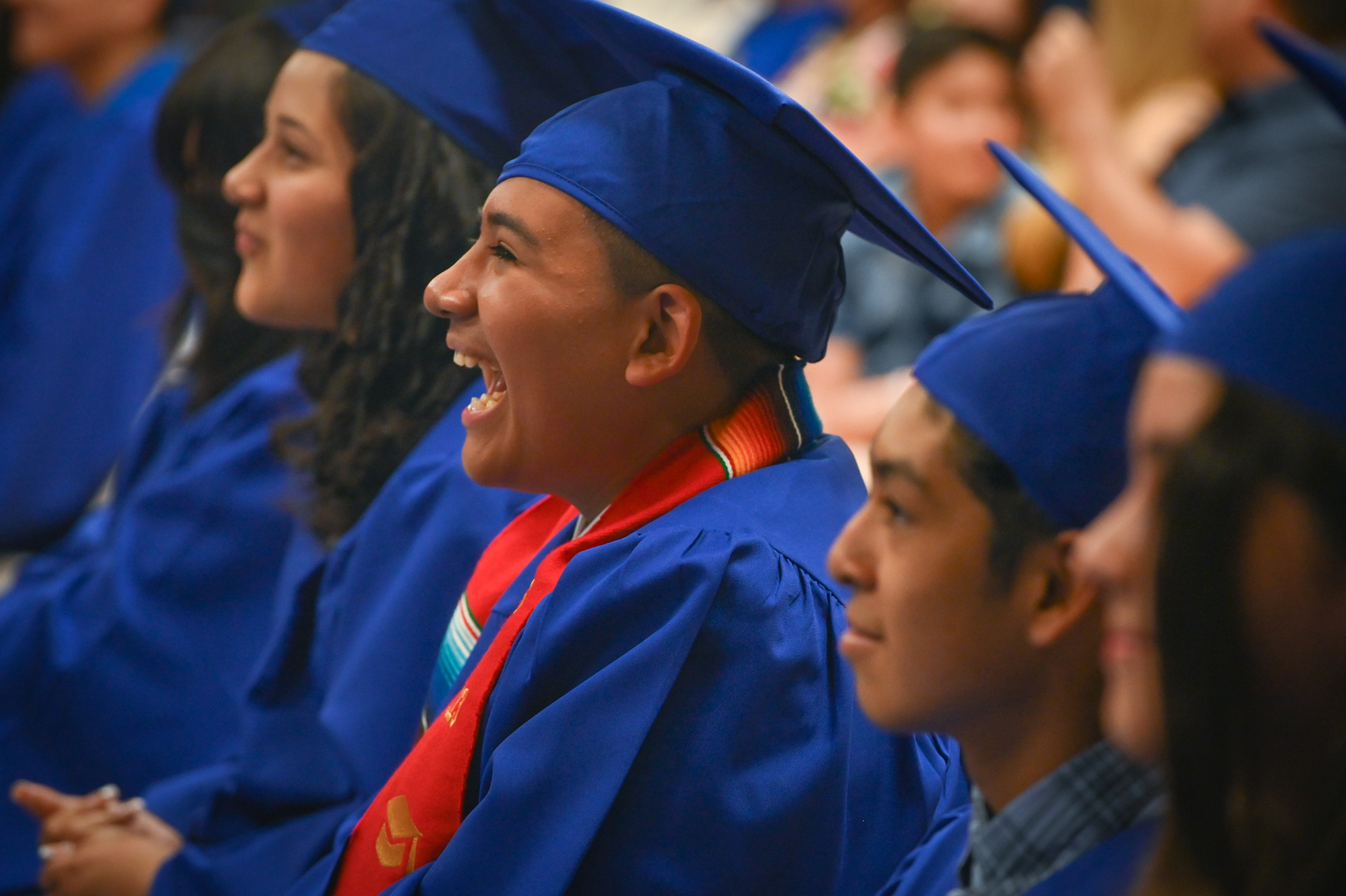When you think about how we grade in most K–12 schools, it makes you wonder. That one missing assignment, the lack of participation last month, the first quiz failed—they all factor into a grade that is meant to communicate the student’s progress in understanding the standards.

These are all examples of behaviors and tell a story of the learning journey—but they don’t communicate what a student actually knows. In order to do that, educators need to assess mastery, using standards-based grading (SBG) or mastery-based grading. As principal at Christopher House Elementary School in Chicago, transitioning to SBG made sense to me. But without building blocks such as aligned units and assessments and a strong understanding of personalized learning in place, my early attempts fell flat. Five years later, however, SGB is fully implemented in all subjects and grades, and it is getting rave reviews from teachers and parents alike. Here’s what we found out along the way:
- Staff must have a clear understanding of the standards and have developed assessments that clearly indicate the level of mastery (i.e., well-defined rubrics). Grade-level teams need common units and assessments, planning transitions from one grade level to the next to ensure a common knowledge of where standards begin and end in each grade.
- Personalized learning is a buzzword these days, but many of the strategies it encompasses are best practices that have been performed in strong classrooms for decades. SBG opens the door to more reteaching and assessment, so having a system to set goals with students and using data transparently are key.Differentiated learning is imperative to allow mastery to be demonstrated at multiple levels. Choice and voice in the curriculum helps students get invested in their own learning and can mitigate poor behavioral academic habits—failing to do homework, not participating in class, or not doing one’s best on an assessment.
- Invest in an SBG-aligned tracking system or design one yourself, even if you need to “translate” SBG into a grade or GPA. To invest in the philosophical change behind SBG and then continue to use a traditional grading system in order to fit mandates is counterproductive. The system we use has its drawbacks, but we are streamlining it so that parents understand the process.Even so, the investment and time needed in training staff to fully move to an SBG tracking system has been worthwhile in terms of continuity. Staff and parents need to know you are fully vested in the practice of understanding mastery. A tool that allows you to upload assessments and rubrics and score them consistently helps hone that message, as does showing parents the real work of assessing on each standard taught that cycle.
- Parents are critical to successful implementation. After all, that’s who we are communicating with when we assess student progress and students themselves. Early on, I discussed the whys behind SBG at parent orientation sessions, included clear, succinct explanation letters with the first reports sent home, held additional parent information sessions, and dedicated time to a first round of conferences to explain students’ progress in the context of SBG.When students are at the center of practice, almost all parents will respond positively or at least be willing to hear your message and adapt. I was careful to ensure that parents knew it was a journey we would be taking together—all of us grew up with traditional grading practices and can understand their drawbacks. I started each conversation from this place to establish a common frame of reference.
- Behavior still matters. Everyone needs to know how their child is functioning within the school setting. In addition to SBG, I began the school year with intensive professional development on behavior as a manifestation of skills and the ability to self-regulate—the idea that behavior is really about where students are in acquiring a variety of social-emotional habits and behaviors. A growth mindset gives parents and students clearer information about where they can improve.Cross-referenced to our SEL curriculum, the standards help teachers develop a scope and sequence for SEL assessment. With specific habits to focus on to improve overall behavior, everyone invested in the student—parents, teachers, administrators, social workers, and the students themselves—can work to improve habits in manageable chunks. Seeing behavior in terms of mastery respects students as individuals who are allowed to make mistakes and have room to grow.Prior to the implementation, I spent a great deal of time developing each piece of the puzzle, so we were able to jump in head-first. Teachers understood the process, parents trusted the investment, and students benefited all around. But even if you choose a more staggered implementation, SBG is a great way to invest the entire school community in a personalized, student-driven, and growth-based mindset.

